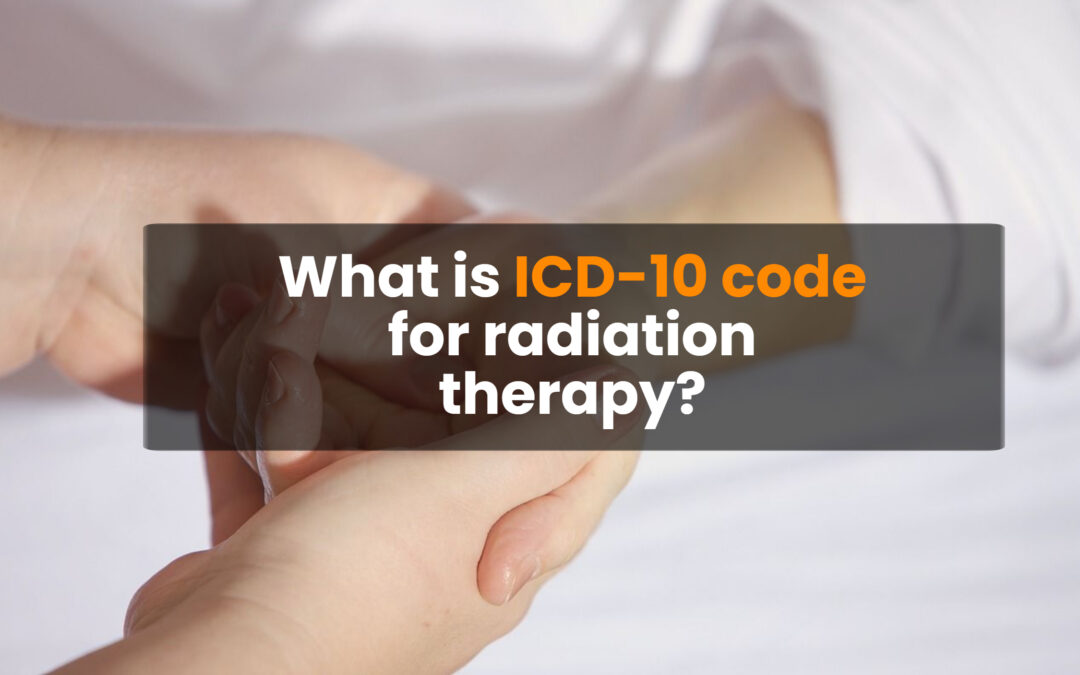Proper coding allows billing patients appropriately, keeping accurate data, and delivering excellent service. This blog explores the major radiotherapy codes. We’ll learn their complexities, why they’re essential, and how to effectively go through the coding of this complex field.
This guide will explain these codes and provide the significant information necessary for medical billing.
What are the benefits of radiation therapy?
Cancer symptoms are reduced and treated by radio treatment. Radiation treatment, when used to treat cancer, can eradicate the disease, stop or decrease its progress, or all three. “palliative treatment” refers to medical interventions meant to relieve symptoms.
What is the Code for Radiotherapy? ICD-10
The ICD coordinates the reporting and tracking of diseases. The ICD-10 for managing this medical field is provided under the following:
- N52 – Male erectile dysfunction: This ICD code is used to identify males who have erectile dysfunction, which is the persistent inability to obtain or sustain an erection strong enough to allow for fulfilling sexual performance.
- Y63 – Failure in dosage during surgical and medical care: This code is applied when a medicine dosage is administered incorrectly during a surgery or medical procedure, potentially resulting in difficulties or insufficient maintenance.
- Z51 – Encounter for other aftercare and medical care: This code identifies a healthcare interaction specifically for continuing or follow-up care and is unrelated to an existing condition or injury. It could involve monitoring chronic diseases or managing routine check-ups.
- Z79 – Long-term (current) drug therapy: This code shows that a patient is receiving long-term treatment, which may include prescription drugs to continue treating chronic diseases.
- Z85 – Personal history of malignant neoplasm: A person who gets this code has a personal account of a malignant neoplasm (cancer), suggesting they have had chemotherapy for cancer in the past. Given that it may affect treatment and care choices in the future, healthcare professionals must be aware of this history.
HCPCS code for Radiation Therapy
Why are HCPCS codes necessary?
These coding systems play a crucial role in the payment of hospitals and physicians and in evaluating quality, benchmarking, and gathering general medical statistics data. The HCPCS codes necessary in the field of radiotherapy are given as under:
- C9726 – Placement and removal (if performed) of the applicator into the breast for the intraoperative procedure: This code designates the insertion and removal of an applicator for intraoperative procedure, focused radiotherapy, during surgery.
- G4031 – Radiation oncology MIPS specialty set: This code is unique to radiation oncology’s Merit-based Incentive Payment System (MIPS). It explains the usage of particular metrics and the reporting specifications for experts in this field.
- G6001 – Ultrasonic guidance for placement of the fields: This code specifies the use of ultrasound guidance to help in the correct installation of the fields, ensuring that the wanted treatment area is accurately targeted.
- G6002 – Stereoscopic X-ray guidance for localization of target volume for the delivery of the Procedure: This code relates to the precise localization and identification of the treatment target volume using stereoscopic X-ray guidance. It helps guide the therapy beams toward the desired area.
- G6015 – Intensity-modulated treatment delivery, single or multiple fields/arcs, via narrow spatially and temporally modulated beams: This code depicts spatially and temporally modulated narrow beams to deliver intensity-modulated radio treatment (IMRT). Providing the doses accurately allows for targeting cancers while protecting surrounding healthy tissues.
- G6017: This code refers to using intra-fraction localization and tracking techniques during the treatment to follow the target’s or patient’s three-dimensional movement.
- G9131: This code indicates a diagnosis of invasive breast cancer in females, especially adenocarcinoma, and excludes ductal carcinoma in situ cases.
- G9706: This code denotes a low or zero chance of recurrence for males with prostate cancer.
- G9895: This code records the medical reasons for not prescribing or administering androgen deprivation therapy when combined with external beam radiation.
- G9896: This code records the patient’s justifications for not requesting or receiving androgen deprivation treatment in conjunction with external beam radiation.
- G9897: Patients who did not get androgen deprivation therapy in conjunction with external beam radiation are identified by this code.
- J0270: This code designates the administration of the erectile dysfunction drug alprostadil under the close supervision of a medical practitioner.
- J0275: Refers to the erectile dysfunction medication Alprostadil urethral suppository. When the medication is taken directly under a healthcare professional’s supervision, it can be paid under Medicare.
- J1450: This code represents a 200 mg fluconazole injection. An antifungal drug called fluconazole is used to treat different fungi infections. The code is used to record how this drug was administered.
Conclusion:
Radiation therapy billing and reimbursement need proper coding. ICD-10 and HCPCS codes describe this field’s processes, diagnoses, and equipment. These codes improve patient care and financial outcomes by ensuring appropriate documentation and simplifying billing.










